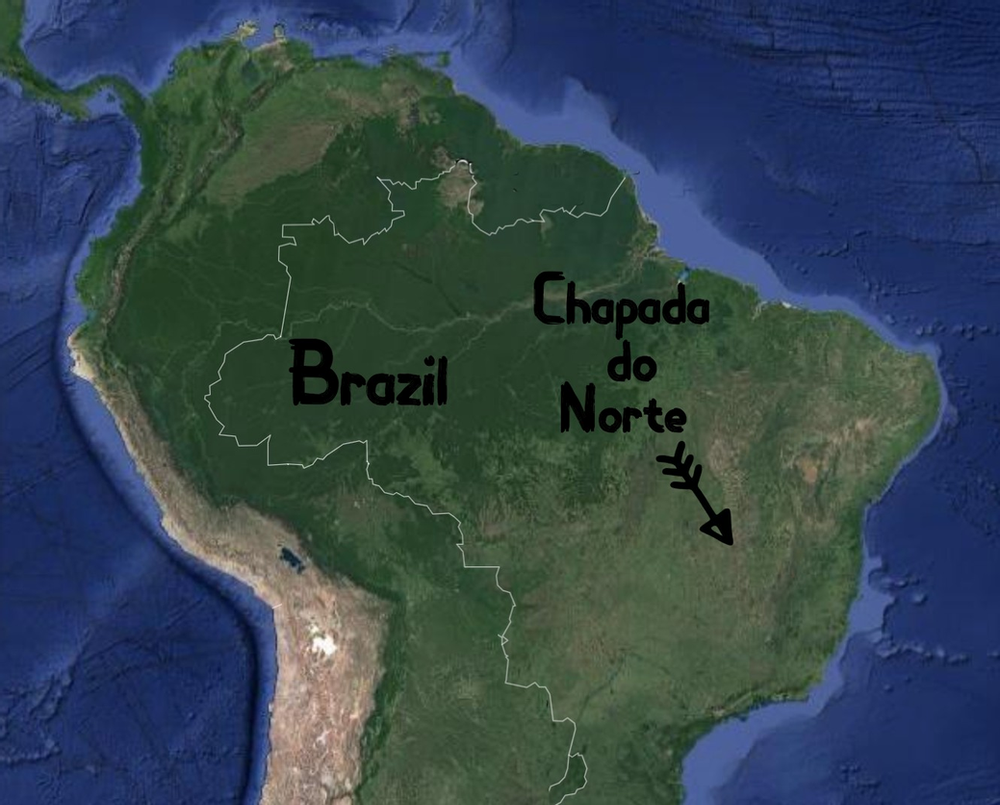Welcome to RAIN!
In 2011 I travelled to Chapada do Norte, a poor and dry region of Minas Gerais, Brazil to meet my future in-laws for the first time. I was expecting a child with their daughter, and wanted to do the right thing by introducing myself.
The family welcomed me with open arms and fed me pineapples from their farm.
South America - Map
My soon-to-be brothers-in-law took me swimming in a stream where fish nibbled curiously at the uncommonly white flesh they were presented with and dragonflies buzzed among the flowers. The region of Chapada do Norte is home to many rare and endangered species living in this transition zone between the Atlantic forest and the cerrado (the Brazilian savannah). The chorus of frogs must be heard to be believed.
Five years later when we returned to grandpa’s with our twins I was excited to take them to the stream, but it had dried up. All of the tributaries of the Araçuai river are drying up. The Araçuai is the last river surviving of the five that used to flow through Chapada do Norte. This tragedy is being repeated all over central Brazil. The major cause: deforestation.
Causes and Impacts of Deforestation
Trees and vegetation protect the land from erosion and nutrient loss. They slow down rainwater as it travels through the water cycle so it can nourish the land and its inhabitants - both humans and the many animals that live there.
As the Atlantic forest and the cerrado continue to be torched, rivers continue to dry up. The devastation of hydrological systems leads to water shortages in the urban centres of the south and floods in the Amazon in the north. It has impacts on rainfall as far away as North Africa and India.
At a local level
People are aware of the link between the deforestation and the changing weather, but this is one of the poorest parts of the country. Slash and burn agriculture frees up land for cultivation and gives good yields, for a while. Soon, however, the productivity of the land drops without an ecosystem to support it - destroying more native forest seems to be the only option.
Is it too late?
Instituto Terra rapidly regenerated degraded land into a nature reserve home to many endangered species
Water is life, and people are watching the volume of water in the Araçuai drop further every year. Many people who want to do something are struggling to feed their families, and see conservation as a sacrifice. But several regeneration projects in Brazil have been astonishing successes, quickly turning deforested ranches into rich forests harbouring endangered amphibians.
How does RAIN help?
We are empowering local people with local knowledge to regenerate springs and cultivate abundant agroforestry plots to bring the landscape they love back to life.
We finance schools in rural Brazil to build sapling nurseries where teachers hold lessons and students cultivate thousands of saplings. The children act as ambassadors, talking about the importance of river systems with their families and asking their grandparents about the rivers when they were young. Then we help people protect and reforest water springs that have run dry in order to bring them back to life.
Students growing seeds in the sapling nursery of Cachoeira School
Our first partnership was with the school of Cachoeira do Norte, a village with six dried-up or silted up springs around it. With the help of the students growing saplings, all of the land-owners have been persuaded to give up around a hectare so we can reforest them. One farmer even paid for a labourer to help our agent doing the work.
Scaling up
Each new school opens up fresh opportunities to restore the rivers in a new community. Fifteen schools in Chapada do Norte have approached us, along with several in other parts of Minas Gerais. We are starting operations in the state of Pernambuco with a nursery in October, and will press ahead as soon as we have funds.
Thank you for your Support
There is a huge amount of work to be done, and with the generous support of our donors the first seeds have been planted. Help us to keep watering them!
Subscribe to the newsletter to stay informed, share our social media pages, donate some money or volunteer some of your time.




